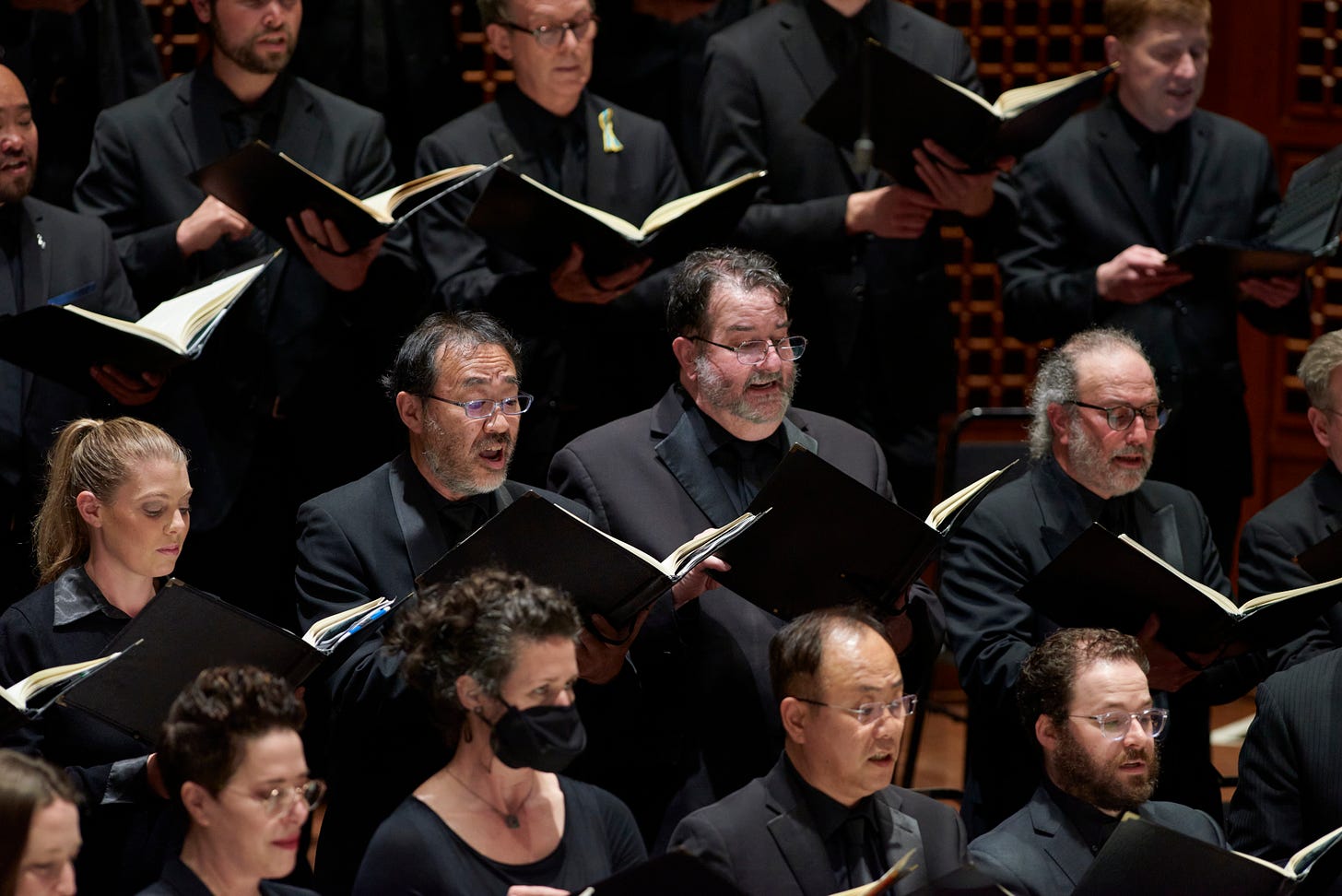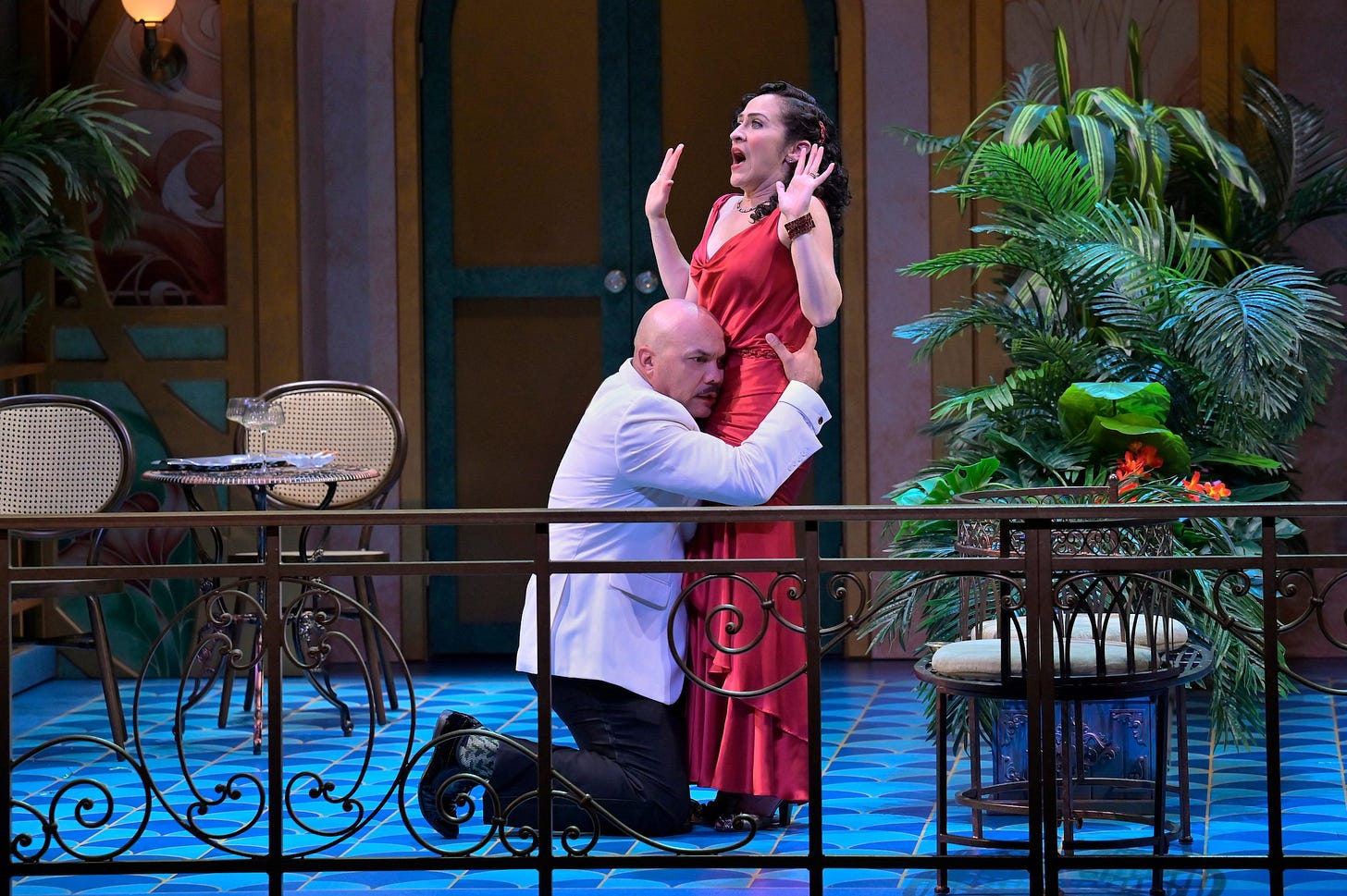Requiem mess
As prospects for the San Francisco Symphony worsen, the orchestra's Verdian season opener goes poof
I was looking forward to starting off this week’s column with some thoughts about Esa-Pekka Salonen’s performance of the Verdi Requiem with the San Francisco Symphony. Hell, I was looking forward to hearing Esa-Pekka Salonen’s performance of the Verdi Requiem with the San Francisco Symphony. It’s not the kind of repertoire I associate with Salonen. How, I wondered, would his brand of cool, precise expressivity interact with the throbbing blood and gristle of Verdi’s apocalyptic masterpiece?
We never found out. Just hours before Thursday’s season-opening concert, the unionized members of the S.F. Symphony Chorus went out on strike. The picket lines went up, the instrumental musicians of the Symphony refused to cross, management pulled the plug, and just like that, the weekend’s three planned performances went up in smoke. Dies irae indeed.
I’ve been trying to cling to some shreds of hope about the future of the Symphony for months now, ever since Salonen announced in March that he would not renew his contract when it expires at the end of the 2024-25 season. Surely, I thought, the board and executive leadership who have been entrusted with the stewardship of one of the city’s most glorious civic treasures would never toss it all aside so blithely. There must be a plan, I assumed — if not now, then soon. There must be some awareness of the existential threat looming over this 113-year-old institution. If nothing else, you’d think there would be some personal embarrassment attached to being the people who let Salonen get away, and that that might lead in turn to some kind of course correction.
It's not easy to see those glimmers of light anymore. The chorus walked out over a proposed 80% budget cut, which its former director, Vance George, rightly slammed as “deeply insulting.” That’s not a haircut, it’s a full-scale cancellation. It’s an announcement that Symphony leadership sees no more need for a professional chorus than for a top-echelon music director.
And with no disrespect intended, the chorus is the canary in the coalmine here. The orchestra’s contract is set to expire in November; anyone want to take bets on how that’s going to go down? Whatever goodwill may once have existed between the musicians and the board is becoming increasingly threadbare. If there’s not money in the budget for Esa-Pekka Salonen’s artistic ambitions — which are precisely among the reasons his hiring was such a coup, and made San Francisco the envy of the musical world — it’s hard to see how there will be money to fill the next orchestral vacancy with top-level players, or to keep the ones that are here now.
This isn’t just idle doom-mongering; it’s basic common sense. In the past couple of years, the Symphony has hired, inter alia, three superb new principal musicians: cellist Rainer Eudeikis, flutist Yubeen Kim, and harpist Katherine Siochi. I interviewed all three of them for The Chronicle, and each one of them volunteered that one of their chief motivations for coming to San Francisco was the opportunity to work with Salonen. That didn’t work out as planned, and musicians around the country are obviously going to take note.
As for the musicians who are already here, they can see which way the wind is blowing as well as you or I can. The Symphony is heading into an extended period of contraction that isn’t likely to end well for anyone.
I’m just a humble country critic, and I don’t really have any informed opinions about the underlying financial realities. Is the Symphony truly going broke, as they allege, or is this all deliberate poor-mouthing to prepare for a hard negotiating stand come November? Above my pay grade. “You’ve got a huge endowment — use it!” is not the panacea some observers think it is, but maybe there’s a nugget of truth there nevertheless. If contributions have tanked, maybe the board, whose responsibility it is to bring in the donations, needs to step up its game. And in the face of all this, is the Symphony really planning a $100 million renovation to the perfectly fine Davies Symphony Hall? No idea, but Christ I hope not.
Here's what I do know, though. The last time the organization went through a crisis of this magnitude was during the terrible nine-week strike of 1996-97. I covered the whole contentious donnybrook, and trying to keep track of the charges and countercharges, the minutiae of competing health-care plans and seniority proposals, and a shifting cast of characters coming in and out of the negotiations, was practically a full-time job. I’ve forgotten it all. What I still remember vividly, though, nearly 30 years later, was the sense of urgency surrounding the whole affair. Everybody who got involved in the process understood that the future of the San Francisco Symphony was on the line, and that the shape of that future was something worth fighting for. That may be why things got so ferocious.
I don’t detect any of that urgency this time around, at least not from the management and board. Esa-Pekka Salonen — one of the world’s great conductors, whose leadership any orchestra would be fortunate to secure — is departing, and the leadership’s collective response has been to shrug. (For what it’s worth, Salonen doesn’t seem to be on speaking terms with anyone over there anymore.) The search for Salonen’s successor, a process that can typically take years, has only just gotten underway. The season opener, a showcase for both the music director and the Symphony Chorus, vanished and it’s “Well, whaddya gonna do, shit happens.” At no point has anyone in the organization’s leadership stepped forward to publicly acknowledge that there’s a four-alarm fire tearing through Davies Hall at unnerving speed. Instead, we’re getting bland platitudes urging folks to come on down to the hall, to support the orchestra, to commit to keeping the music flowing.
That’s not how this works. That’s not how any of this works.
Elsewhere:
Minnesota blogger Emily E. Hogstad at Song of the Lark has been on an eloquent, fearless rampage on this subject all summer long, and all her posts on the matter (four so far and counting) are must-reads. It’s not just that she’s a wonderful writer, funny and smart and terrifyingly insightful. It’s also that she was on the scene in the Twin Cities in 2012-14 when the Minnesota Orchestra imploded and very nearly perished. She’s seen how this can play out; she knows the warning signs better than just about anyone in our own back yard.
Wholly Coward
Nobody is likely to associate Noël Coward very strongly with physical comedy. His work is about words and music, in different proportions and with varying degrees of seriousness or humor. Yet director KJ Sanchez’s oddly effective production of Private Lives, which opened last Wednesday night at A.C.T., is at its best and most uproarious when no one onstage says a word.
Hugo E Carbajal, as the honeymooning Elyot, drops to the stage when he hears the voice of his ex-wife Amanda on the adjacent hotel veranda, then oozes toward her on his back like some kind of human slime mold. In a later scene, Sarita Ocón, as Amanda, makes space for a breakfast tray on a cluttered coffee table by balletically kicking its contents to the floor. When Elyot, after one of the pair’s countless spats, blows Amanda a kiss by way of reconciliation, she catches it and tosses it aside with disgust. The entire show is studded with little gems like this.
And the tangos! Sanchez has relocated the play from the French Riviera to Argentina and Uruguay, which gives her an opportunity to get everyone dancing in the slinkiest and most sinuous way. It’s just as well, too — the romantic and sexual sparks between Elyot and Amanda don’t always register fully in the actors’ line readings. But their bodies tell a different story.
Private Lives: American Conservatory Theater, through Oct. 6. www.act-sf.org.
Elsewhere:
Lily Janiak, San Francisco Chronicle: “Sanchez…is so good with physical comedy you want to see her make a whole clown show of dance scenes and fight sequences.”
David John Chávez, KQED: “in the hands of Elyot and Amanda, their tango is perfect: a soft kick here, a gentle spin there, with bodies that flutter close together to turn their hot breath into hotter fire.”
Jay Barmann, SFist: “tango dancing…ends up playing a minor role in just a couple of scenes.”
Jean Schiffman, Bay City News: “it whizzes by, getting better — funnier and deeper and more surprising — act by act.”
Postscript
I mentioned last week that this column would revert to my old blogging brand, On a Pacific Aisle, as soon as I could figure out how to make the Substack software comply. Thanks are due to Steve Smith, my Substack Virgil, who nudged me in the right direction over the course of a generous series of emails.
Night After Night, Steve’s twice-weekly compendium of musical events in New York and on record, is an indispensable resource, as well as a jaw-dropping testament to the amount of music one human being can listen to and take stock of in a given period of time. No one in the business, I think, is entirely sure how he pulls it off.
Cryptic clue of the week
From Out of Left Field #234 by Henri Picciotto and me:
State modeled on Jamaican music? (6)
Again, (6) is the enumeration; it tells you that the answer is 6 letters long.
Last week’s clue:
Small, pale bird (4)
Solution: SWAN
Small: S (as in S, M, L, XL)
pale: WAN
bird: definition
Coming up
• Harawi: Olivier Messiaen’s 1945 song cycle comes to Cal Performances in a staged production by American Modern Opera Company. Julia Bullock, whose work is always fascinating and often unforgettable, is the soprano soloist, with pianist Conor Hanick and choreographer/dancers Bobbi Jene Smith and Or Schraiber. Sept. 27, Zellerbach Hall, UC Berkeley. www.calperformances.org.
• San Francisco Symphony: Pianist and composer Nico Muhly unveils his new Piano Concerto, a Symphony commission with Esa-Pekka Salonen conducting and Alexandre Tharaud as soloist. Music by Bach and Hindemith, including the mighty though often unwieldy Mathis der Maler Symphony, completes the program. Sept. 27-28, Davies Symphony Hall. www.sfsymphony.org.
• Other Minds Festival: Charles Amirkhanian’s new-music extravaganza remains, after 28 years, one of the go-to events on the contemporary music calendar. This year’s festival features the world premiere of The Cello Quartet by the composer and inventor Trimpin, which promises not only a cello, but also dancers, circus artists, projections, and more. Sept. 25-28, Brava Theater. www.otherminds.org.
• Daughter of the Regiment: One of the brighter additions to the Bay Area musical landscape in recent years is Livermore Valley Opera, whose two annual productions are reliably strong and often reach beyond the predictable standard repertoire. I’m going to miss this season opener, because of the crush of other attractions (see above) and for fear of my Donizetti allergy acting up. But there’s no reason you have to. Soprano Véronique Filloux, who was excellent in last year’s Of Mice and Men, takes the title role. Sept. 28-Oct. 6, Bankhead Theater, Livermore. LVOpera.com.








Blushing over here on this coast…
xoxo
Virgil
I think you have your fingers on the pulse here: this time feels different and there is no sense of urgency about getting key relationships with artistic staff back on track.
Maybe finances really are precarious and management feels a complete reset.
But I doubt they’ll get it - at least for long. Major American orchestras just don’t shrink a size or two.
And the recent settlement in New York only complicates matters for management. How did New York find the 30% increase? Some respond: ‘well San Francisco is small and we can’t compete with big New York,’ which is of course nonsense. I would suggest we more than competed with every US orchestra throughout the MTT years.
One last thought. Could a small part of what’s going on be possibly related to lovely and generous Mr. Getty beginning to approach the end of his philanthropy to the Symphony? Have they looked into their crystal ball and disliked what they saw!